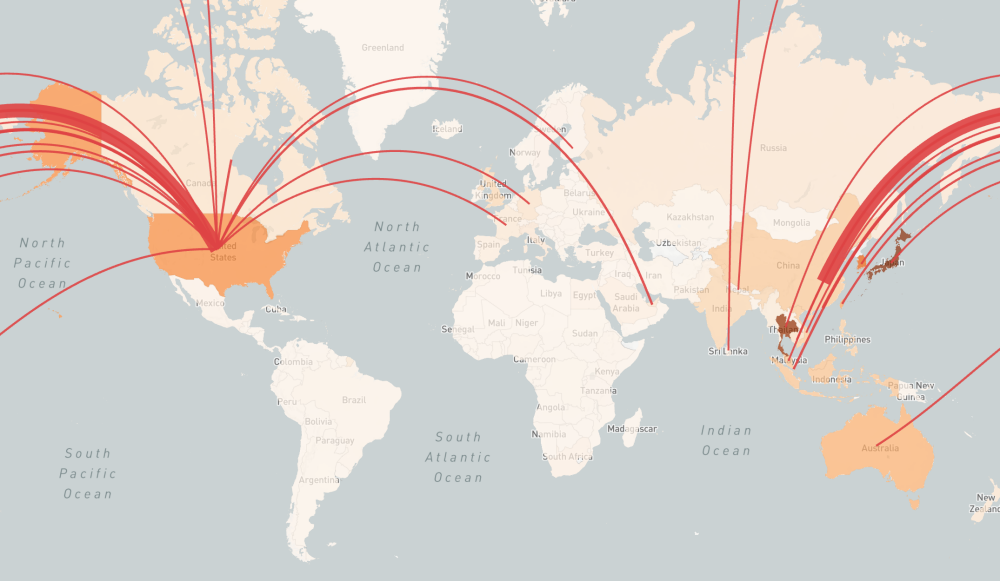One in four households with children have reported a child experiencing hunger as a result of the COVID-19 health crisis, according to the latest CUNY SPH COVID-19 tracking survey. Many New Yorkers continued to report difficulties in getting the food they needed, but of particular concern is the impact on households with children under the...
Health
Use of Unproven COVID-19 Therapies by African American Patients Poses Risks
Nearly one out of every 10 African Americans has a genetic variant that puts them inherently at an increased risk for ventricular arrhythmias and sudden cardiac death. Writing in the journal Heart Rhythm, investigators observe that along with socioeconomic and cultural factors, this genetic risk factor may contribute to the racial health disparities that have been documented...
In Vermont, Pandemic’s Impact Falling Disproportionately on Lower Income Groups
High percentages of Vermonters agree with the social distancing measures put in place by the state in response to the coronavirus pandemic and have complied with them, according to a new survey. But their attitudes and actions, while protecting their health, have come at a significant economic cost, especially for low income Vermonters, one of...
Long Term Care Facilities Are Where Most COVID-19 Deaths Occur
Long-term care facilities (LTCFs) are a major driver of total COVID-19 deaths. Reported in the Journal of the American Geriatrics Society, Boston Medical Center (BMC) and Boston University School of Medicine (BUSM) geriatricians Rossana Lau-Ng, Lisa Caruso and Thomas Perls studied the past month’s case and death data reported by the Massachusetts Department of Health’s...
More Evidence of No Survival Benefit in COVID-19 Patients Receiving Hydroxychloroquine
A study of electronic medical records from US Veterans Health Administration medical centers has found that hydroxychloroquine–with or without azithromycin–did not reduce the risk of ventilation or death and was associated with longer length of hospital stay. This analysis, published June 5 in the journal Med, is the first in the US to report data on...
New Report Examines Challenges and Implications of False-Negative COVID-19 Tests
As communities across the U.S. have struggled to cope with the effects of the COVID-19 pandemic, many have focused on the lack of widespread testing as a major barrier to safely reopening the country. As progress has been made on this front, concern has shifted to testing accuracy, predominantly with antibody tests, which are designed...
New Tool Employs Air Travel Data to Predict Global Spread of COVID-19
As the COVID-19 pandemic enters a new phase, punctuated by emerging hot spots and continuing global spread, a new analytical tool developed by RAND Corporation researchers allows policymakers to predict regional risks of importing cases of COVID-19. The tool, which melds information on infection rates with global air traffic data, has already produced a number...
Psychological Science and COVID-19: Conspiracy Theories
Expert commentary from Karen Douglas, professor of social psychology at the University of Kent, UK, whose research focuses on beliefs in conspiracy theories. Why are conspiracy theories so popular? Who believes them? Why do people believe them? What are some of the consequences of conspiracy theories and can such theories be harmful? What are the principal...
Staying Healthy Mentally and Physically While Protesting During a Pandemic
As people take to the streets in protest during the COVID-19 pandemic, Keck Medicine of USC experts share advice on how the public can protect both their mental well-being and physical health during this time. The importance of acknowledging the trauma many Americans experience “During this time when the American public is already mentally stretched...
Majority of U.S. States and Territories Do Not Require Day Care Providers to Inform Parents of Firearms
Home- and center-based child care providers are not required by most states or U.S. territories to inform parents when guns are stored on the premises, according to a new study from researchers at Johns Hopkins Bloomberg School of Public Health. The researchers found that a majority of U.S. states and territories–47 out of 56–do not...









